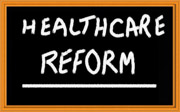
Confused about healthcare financing and where it’s headed? What about future access to addiction treatment? These days it’s hard not to be confused; the experts can’t even agree on what’s happening now, never mind on what will happen next. For example, analysts concur that the United Statesspends far more on healthcare—dollars per capita and percent of gross domestic product—than 12 other industrialized countries. But beyond that, they disagree on which statistics are appropriate to measure the return on that investment and whether the money is well spent. Some say the United States has tens of millions of people without health insurance; others say those numbers are misleading, a myth.
Besides conflicts of opinion, there are conflicts of interest. In the United States, modern health insurance emerged in the 1930s to enable the sick to pay their bills and healthcare providers to get paid for their services. Employers began incorporating health insurance into employee benefit plans during the 1940s and 1950s, a practice that became routine for larger employers. Medicare and Medicaid expanded the population covered by health insurance in 1965. The healthcare cost crisis that was recognized in the 1970s was curtailed somewhat by managed care starting in the 1980s, but costs continue to rise. Advances in technology explain a portion of the rising costs, but how healthcare bills are paid (for units of service delivered rather than for results) may motivate healthcare providers to provide more (perhaps unnecessary) services and increase prices. On the other hand, how healthcare bills are paid may motivate managed care companies to provide fewer services (perhaps denying needed care). Many individuals and organizations hope that changing how healthcare bills are paid will transform or “reform” all of healthcare, making needed health services for everyone more accessible, more efficient, and more effective.
Since before World War II, arguments have been made that healthcare financing can be streamlined with “single payer” health insurance—one large nonprofit insurance mechanism within or close to the government—but there have always beencounterarguments and current support for a national single payer plan is limited.
So what do we have? We have the existing patchwork of private and public health insurance coverage, with benefits at times subject to the approval of a managed care organization. We have many people without any health insurance at all. And we have two major pieces of federal legislation, neither one yet fully implemented, that were enacted in the hope of transforming healthcare for the better. Both have implications for whether and how addiction treatment will be paid for. Just how well each supports addiction treatment can be strengthened by your input, especially if you are a past or potential consumer of such treatment or a provider of those services.
The Paul Wellstone and Pete Domenici Mental Health Parity and Addiction Equity Act of 2008 was to take effect January 1, 2010. Despite expectations this legislation would provide individuals suffering from mental and addictive illnesses with access to healthcare equal to that of individuals with physical illnesses, the implementation of the act has been gradual and, as of this writing, final regulations have not been issued.
Meanwhile, all is not well. For example, in violation of the spirit of this legislation and over objections of healthcare professionals and consumers, staring in January 2013 the state of Maine will set a limit for publically insured patients of two years on access to methadone and buprenorphine for the treatment of opioid dependence. Such limitations on access to medications would be unthinkable for other chronic diseases such as hypertension or diabetes. Broad-based advocacy promoting true parity for addiction treatment may prevent more situations like this.
The Patient Protection and Affordable Care Act (ACA or Obamacare) was signed into law March 23, 2010 and upheld by the Supreme Court June 28, 2012. When the major provisions of this law take effect in 2014, the ACA will require most citizens to have health insurance. Many will continue to obtain coverage through their employer. Many others will enroll in Medicaid, which will expand eligibility criteria. Remaining citizens may purchase coverage through state-based American Health Benefit Exchanges. Persons with low income will be assisted with insurance premium subsidies/credits and small businesses purchasing coverage for employees will initially receive tax credits. Persons who opt for no coverage will be assessed a tax penalty. Insurance companies will not be allowed to deny adults payment for treatment of preexisting conditions and will also have to limit the proportion of insurance premiums they retain for administrative expenses and profit.
Meanwhile, political reaction to the ACA is mixed and many states are not ready for this. Some states are developing exchanges. Vermont even wants its own single payer system. But other states plan not to create exchanges at all, Florida and Texas, for example. The federal government has said it will create exchanges for states that don’t create their own, or will collaborate with states that invite assistance. The ACA will require health insurance to incorporate “essential health benefits” that include “mental health and substance use disorder services,” but this is stated only generally. Details will likely be filled in by each individual exchange, state-by-state. So local decisions during the year 2013 may well determine what specific services will be covered in your state.
If you hold a stake in the future of addiction treatment—because you might need treatment, because you employ or otherwise care about someone who might need treatment, or because you provide treatment—add your voice to the collaboration that will result in your state’s exchange. Your contribution could be crucial to achieving outcomes that are realistic and fair.
The Coalition for Whole Health, of which NCADD is a member, offers Resources for Local Advocates and the Kaiser Family Foundation provides up to date information on healthcare reform. For more information on becoming an NCADD Advocate, click here.
